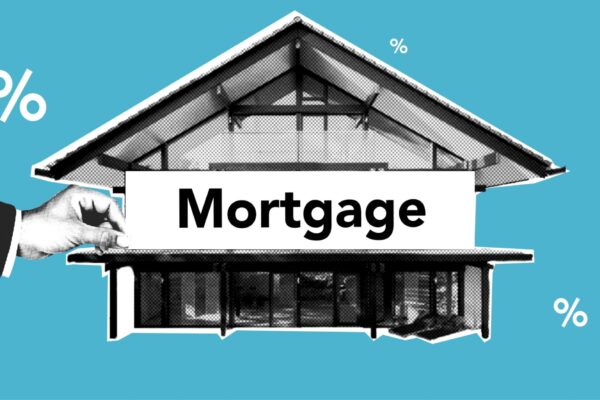Private mortgage insurance protects your lender in case you default on your home loan — and you have the privilege of paying for that protection. Your lender will typically require you to buy private mortgage insurance if you purchase a home with less than 20% down, or if you refinance a home and the equity in the house is less than 20% of the home’s value.
PMI is required because if you can’t pay and the lender is forced to foreclose on a home in which you have no equity, the foreclosure sale may not generate enough money to cover the outstanding loan balance plus the lender’s costs. The problem is that you pay a big cost to buy this protection for your lender. PMI typically costs between 0.5% and 1% of the entire loan amount per year. That means on a $200,000 loan, you could spend as much as $170 a month.
Ideally, you’ll avoid PMI by waiting until you’ve saved enough to put down at least 20% on a home you purchase. Unfortunately, this isn’t always practical. Paying PMI allows you to get into a home — and begin building equity — when you might otherwise need to wait months or years. Buying a house and paying PMI might make sense when real estate values are rising, or if you’re concerned that interest rates will climb and you want to get a mortgage at current lower rates.
In any case, if you have PMI on your home, you’ll definitely want to drop it as soon as you’re allowed. Here are the rules regarding when you can drop PMI, along with a guide on how to eliminate this expense from your budget.
When can you stop paying PMI?
You can stop paying PMI as soon as the balance on your mortgage loan falls to 80% or less of your home’s value, as long as you are up to date on your monthly mortgage payments. If your home is worth $200,000, your loan balance would need to be no more than $160,000 for you to drop PMI.
Your loan balance should eventually fall to 80% of the home’s value if you make your payments each month — but this process can take years, because you’re mostly paying interest on your loan during the early years of your mortgage. If you bought a $200,000 house with a 10% down payment, your original mortgage balance would be $180,000. You’d need to get that balance down to $160,000 to drop PMI. Assuming a 30-year fixed rate loan at 4.25%, your loan balance would drop below $160,000 after 71 payments. — so it would take you almost six years to reduce your loan balance enough to stop paying for PMI.
Making extra payments could help you get your mortgage balance down to 80% of your home’s value faster. If real estate values rise in your area, this could also help. If your home appraises for much more than you paid for it, this increases equity in your home. If your $200,000 house is worth $250,000 a year after you bought it, you’d no longer have to pay PMI, because your remaining mortgage balance — around $177,000 after a year of payments — would be around 71% of the $250,000 your home is currently worth.
How can you drop PMI?
As soon as you believe your mortgage balance has dropped to 80% of your home’s value, you can send a written request to your lender asking to drop PMI. This written request should include your loan information, your property address, information on the equity you believe you have in your home, and a request for your lender to provide you details on the steps to take to stop paying for private mortgage insurance.
Typically, to convince your lender to stop making you pay for PMI, you must provide proof you have at least 20% equity in your home. This usually means paying for a professional appraisal. Your lender will likely want to use their appraiser, so contact the lender to find out how to take this step.
n appraisal is obviously necessary if your request to drop PMI is based on a belief that your home has increased in value. Your lender won’t simply take your word for it that your house is worth more. However, many lenders also require you to submit an appraisal even if your request is based on the fact you’ve paid down your mortgage. Lenders demand an appraisal under these circumstances to ensure your home hasn’t declined in value since you purchased it.
If you don’t want to pay for an appraisal, you can wait, and PMI will eventually be terminated by your lender. If your loan closed after July 29, 1999, lenders are required to automatically drop PMI once your loan balance falls to 78% of the original value of the home at the time you took your loan. Even if your home is now worth less than it was when you bought it, lenders still can’t require PMI and must drop it as long as you’re current on your payments. You don’t have to pay for an appraisal or do anything else, but you could be paying PMI for a lot longer than necessary. With a $200,000 home, your loan balance would drop to just below 78% of its value — ($156,000) after 84 payments. That’s 13 extra payments — an additional $1,820 in expenses — if your PMI costs you $140 a month.
It’s usually worth paying for the cost of an appraisal and writing a simple letter to your lender requesting PMI removal as soon as possible. When you are close to getting your loan balance under 80% of your home’s worth, or if you have reason to suspect your home is now worth more than you paid, check out comparable home sales in your area to get an idea of what your home might appraise for. If those sales support your belief that your home is now worth more than 80% of what you owe, write to your lender and ask them to stop making you pay for PMI to protect their investment.
Source: Madison.com


